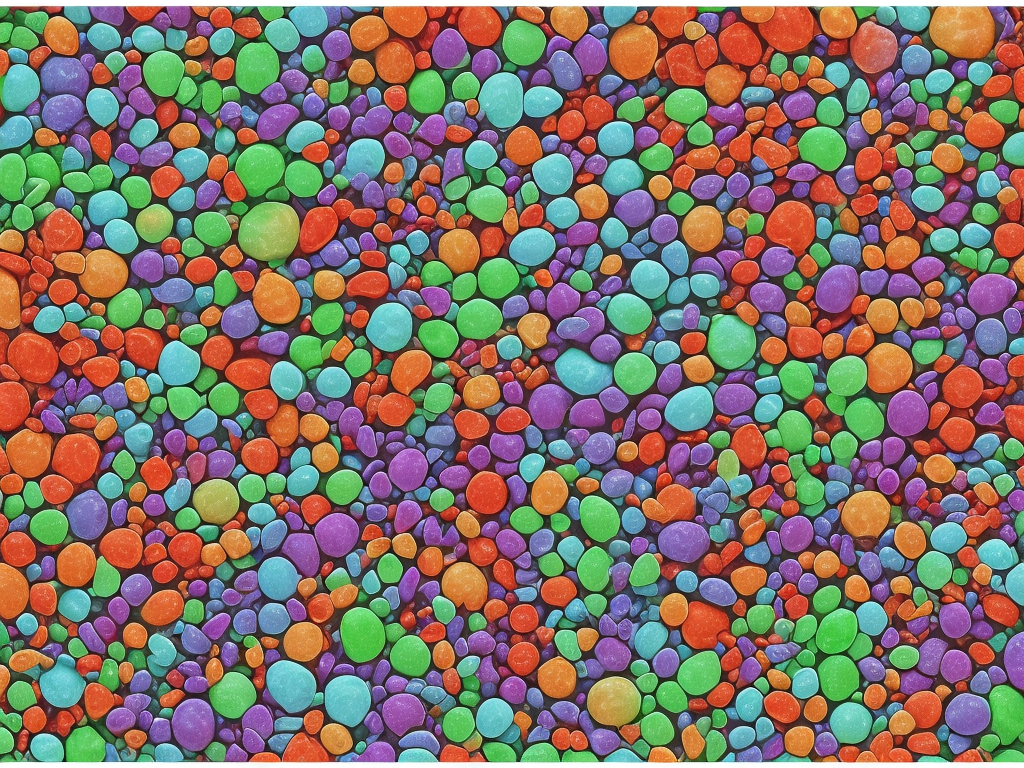
Gram-positive and Gram-negative bacteria are two broad categories used to classify bacteria based on their response to a staining technique known as the Gram stain. This staining technique was developed by the Danish scientist Hans Christian Gram in the late 19th century and has since become an indispensable tool in the field of microbiology.
The Gram stain involves a series of steps that allow us to visualize bacteria under a microscope. It is particularly useful in differentiating between certain types of bacteria, as it reveals differences in their cell wall structure. Based on the results of the Gram stain, bacteria can be classified as either Gram-positive or Gram-negative.
Gram-positive bacteria retain the crystal violet dye used during the staining process, which appears purple under a microscope. This retention is due to the thick layer of peptidoglycan in their cell wall, a polymer made up of alternating units of sugar and amino acids. The peptidoglycan layer provides rigidity and structural support to the cell, making it resistant to the decolorization step of the Gram stain.
In contrast, Gram-negative bacteria do not retain the crystal violet dye and appear pink or red under a microscope. This lack of retention is attributed to the thin layer of peptidoglycan in their cell wall, which is surrounded by an outer membrane composed of lipopolysaccharides (LPS). The outer membrane of Gram-negative bacteria acts as a protective barrier and also plays a role in the pathogenicity of certain species.
One of the key differences between Gram-positive and Gram-negative bacteria lies in the structure and composition of their cell walls. While both types possess peptidoglycan, the relative proportion of this molecule differs significantly. In Gram-positive bacteria, the cell wall is composed of multiple layers of peptidoglycan, making it thicker and more complex. This thickness imparts strength and helps counteract the high internal pressure that can build up in these organisms.
Gram-negative bacteria, however, have a thinner peptidoglycan layer, sandwiched between two lipid bilayers. The outer membrane, located outside the peptidoglycan layer, confers additional complexity and functionality to the cell wall. The outer membrane contains phospholipids, proteins, and lipopolysaccharides, which are unique to Gram-negative bacteria and have important roles in cell signaling, adhesion, and pathogenicity.
Another notable difference is the presence of teichoic acids in the cell walls of Gram-positive bacteria. These acidic polymers are attached to the peptidoglycan layer and play a crucial role in cell growth, division, and resistance to certain antimicrobial agents. Teichoic acids are absent in Gram-negative bacteria, further highlighting the stark contrast between the two groups.
In terms of clinical significance, the distinction between Gram-positive and Gram-negative bacteria is of great importance. It helps guide treatment decisions, as the choice of antibiotics can vary based on the Gram stain result. Antibiotics that predominantly target peptidoglycan synthesis, such as penicillins and cephalosporins, are more effective against Gram-positive bacteria. In contrast, Gram-negative bacteria often require antibiotics that can penetrate the outer membrane.
Furthermore, understanding the Gram stain result can provide insights into the pathogenicity and virulence of bacteria. Gram-negative bacteria have mechanisms to resist host immune responses and are often associated with more severe infections. The outer membrane of Gram-negative bacteria contains porins, which allow the selective passage of molecules into the cell. This outer membrane also contributes to the release of endotoxins, which triggers a strong inflammatory response in the host.
In terms of bacterial identification, the Gram stain result is often a starting point in the laboratory. It provides valuable information about the morphology and arrangement of bacteria, facilitating further tests or cultures for a more precise identification. For example, the presence of encapsulated Gram-positive cocci may suggest the possibility of Streptococcus pneumoniae, while Gram-negative rods can point towards bacteria such as Escherichia coli or Klebsiella pneumoniae.
In conclusion, Gram-positive and Gram-negative bacteria are distinguished by their response to the Gram stain, which is based on differences in their cell wall structure. Gram-positive bacteria retain the crystal violet dye due to their thick peptidoglycan layer, whereas Gram-negative bacteria do not retain the dye due to their thin peptidoglycan layer and outer membrane. The distinction between Gram-positive and Gram-negative bacteria is crucial in clinical settings for guiding treatment decisions, understanding pathogenicity, and facilitating accurate identification. Overall, the differences between these two types of bacteria shed light on their unique characteristics and aid in our understanding of the microbial world.
 Self-Instruct
Self-Instruct